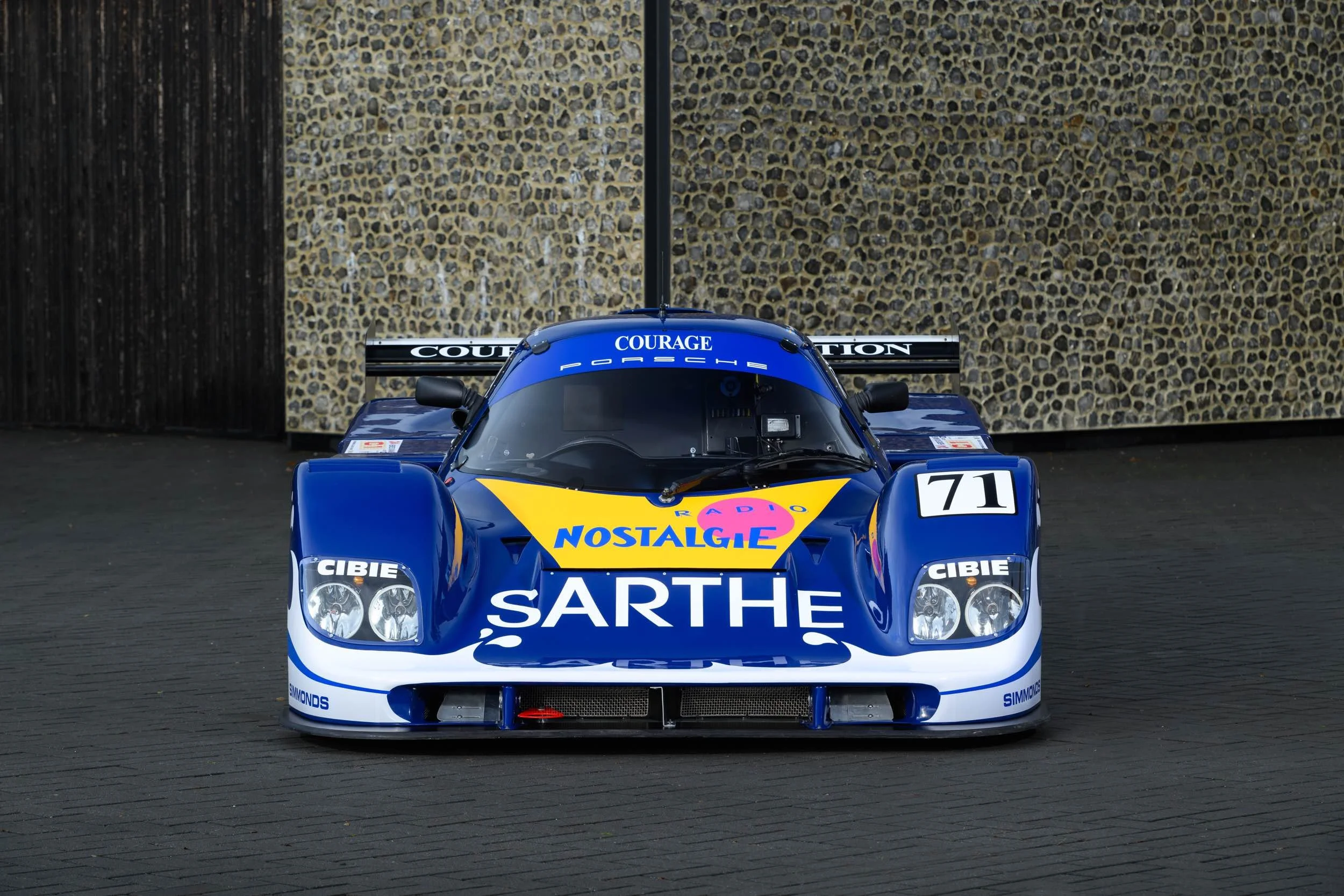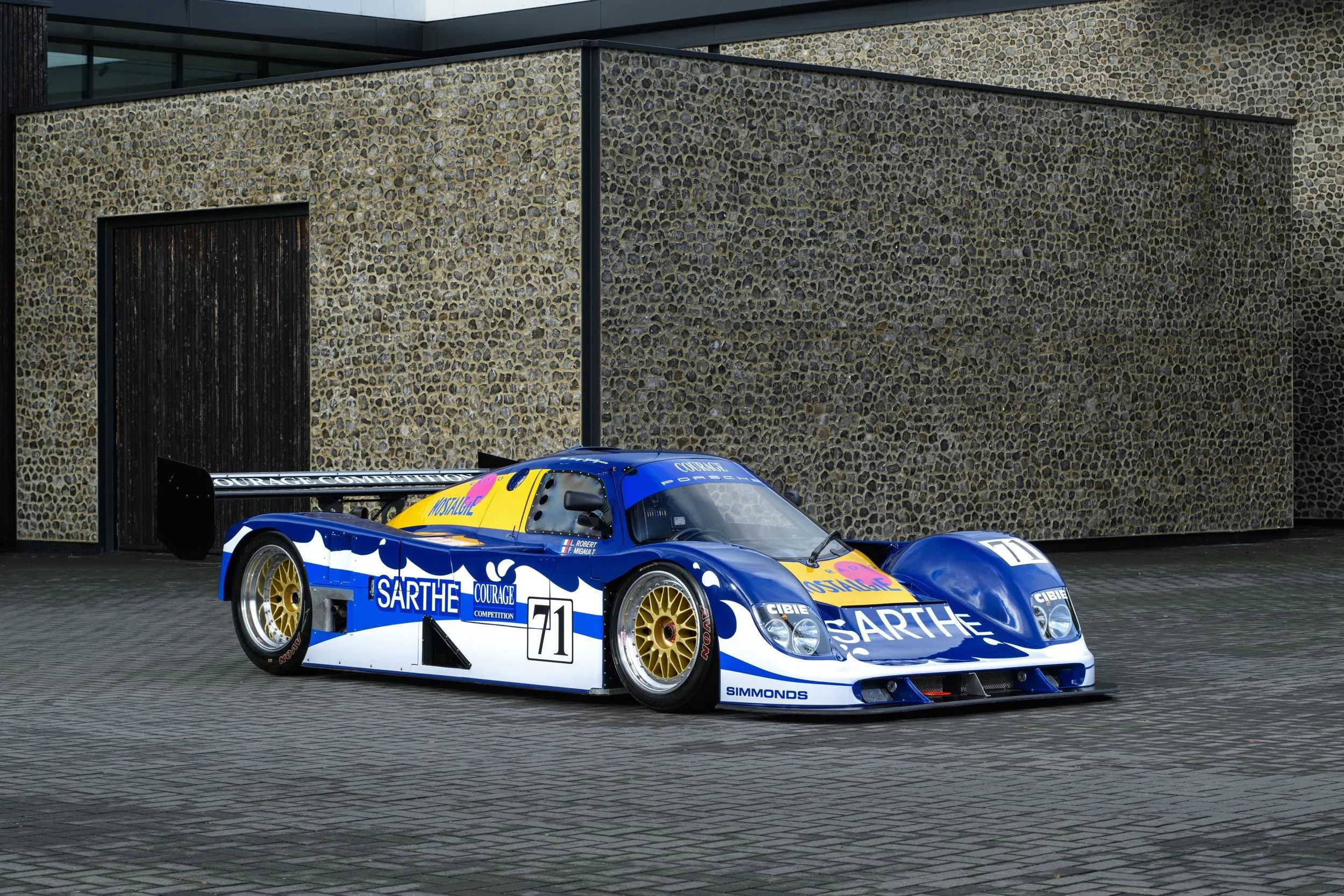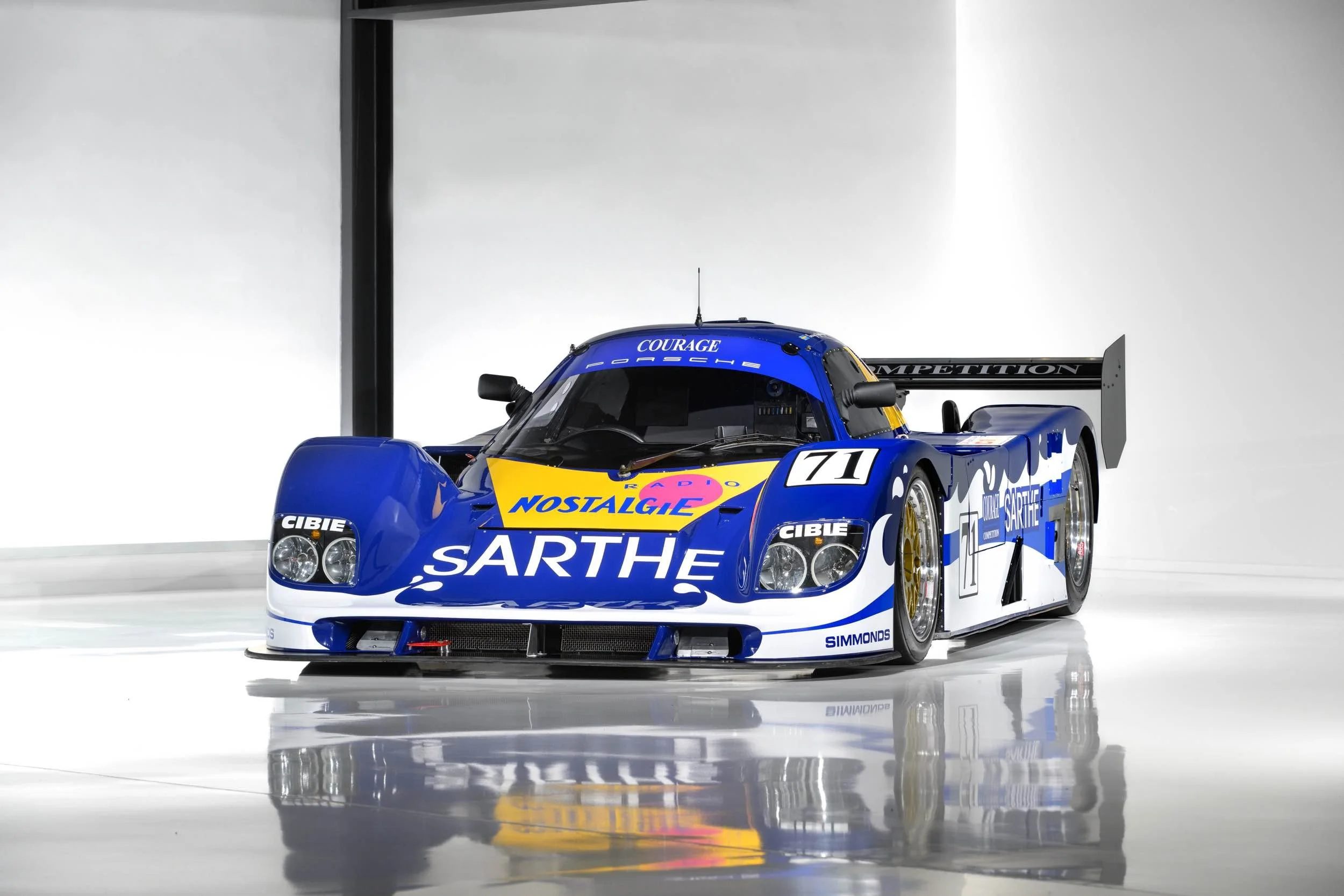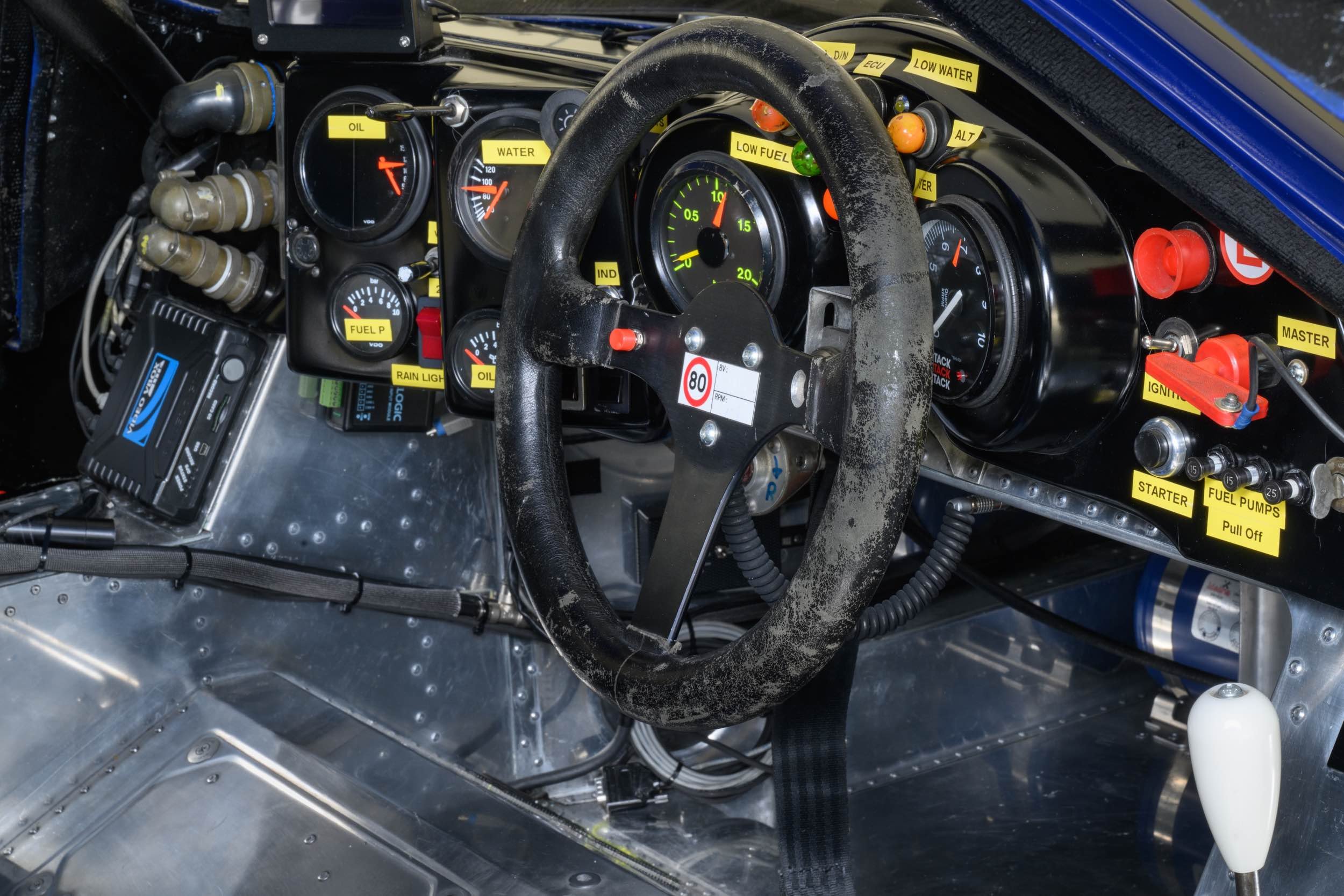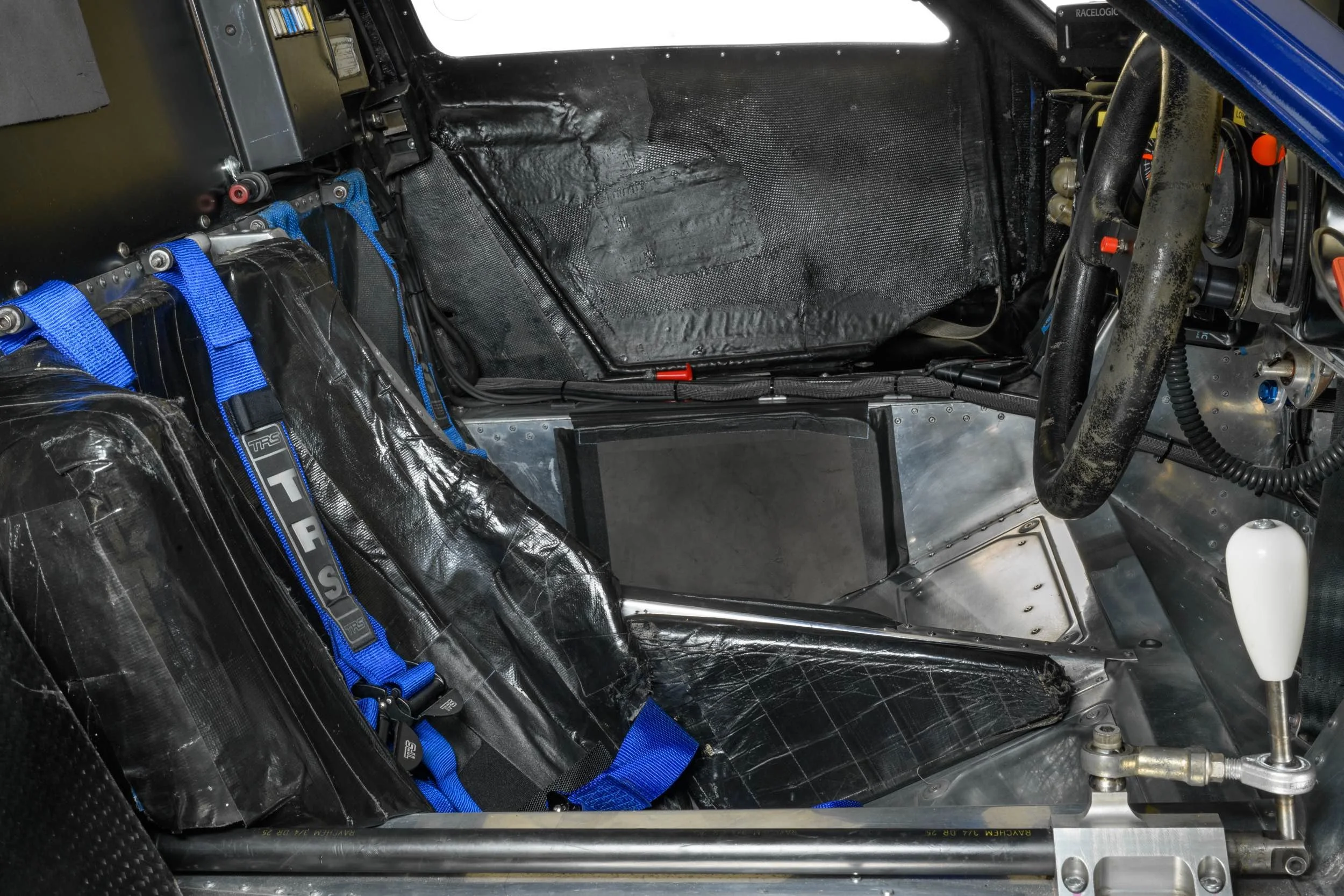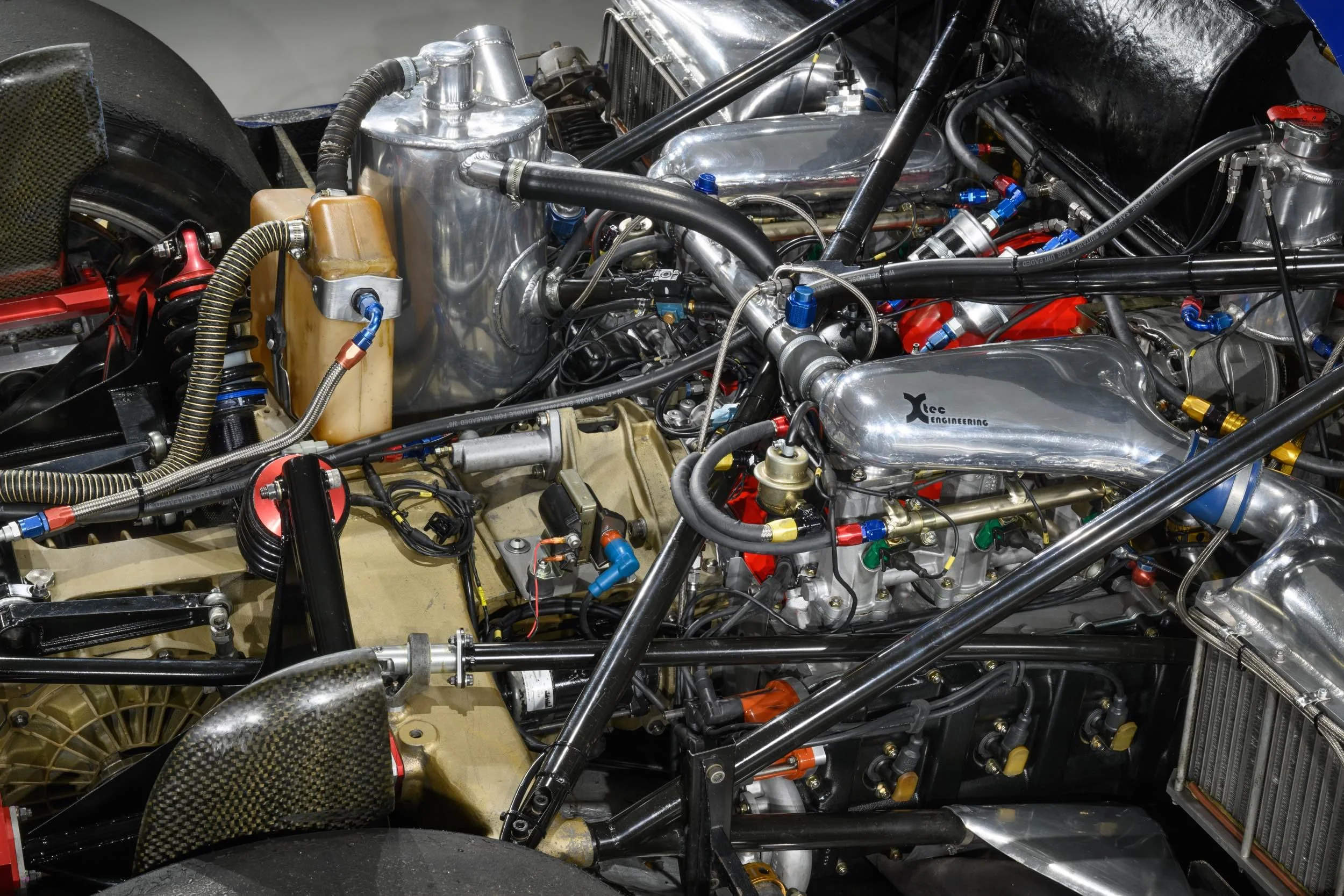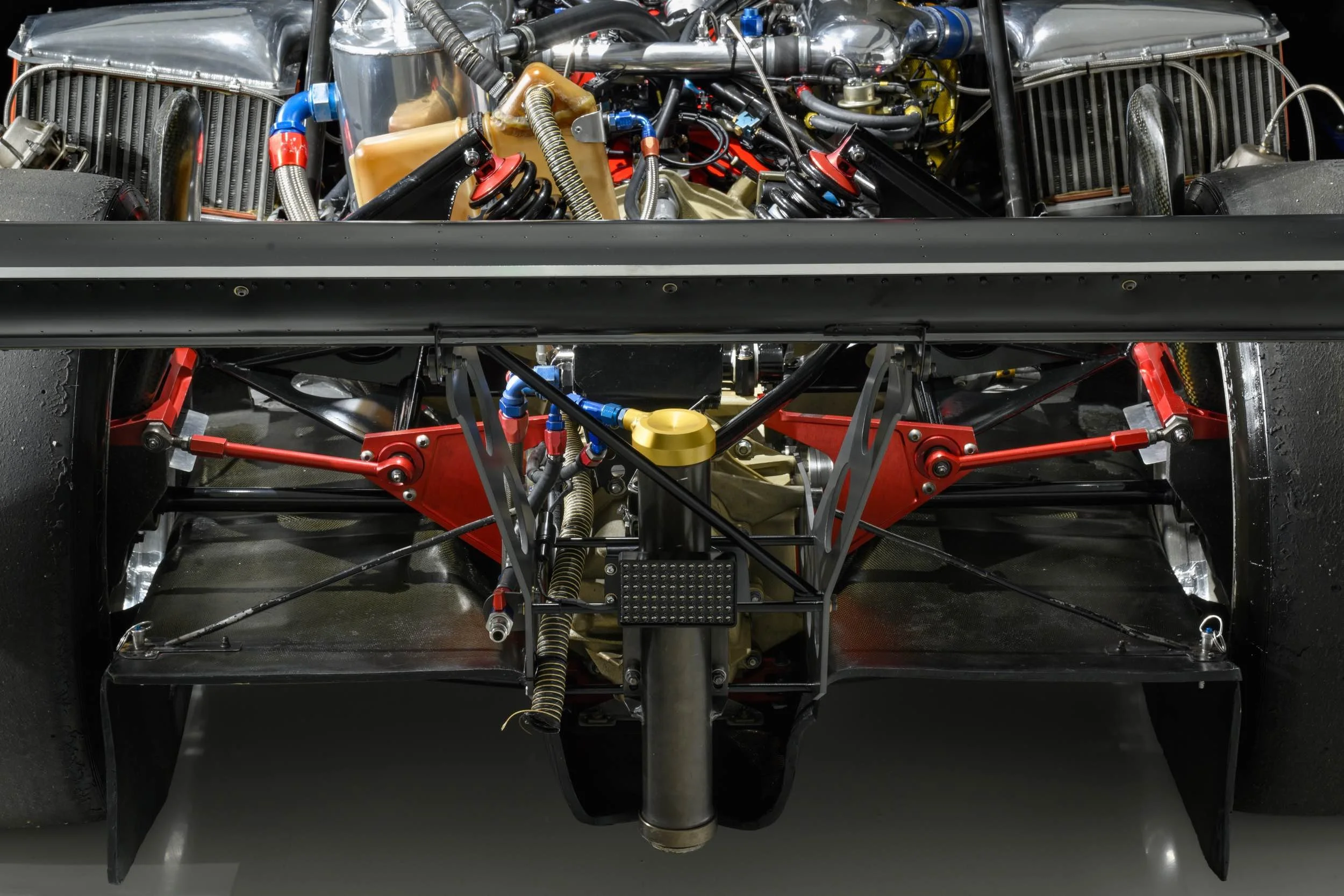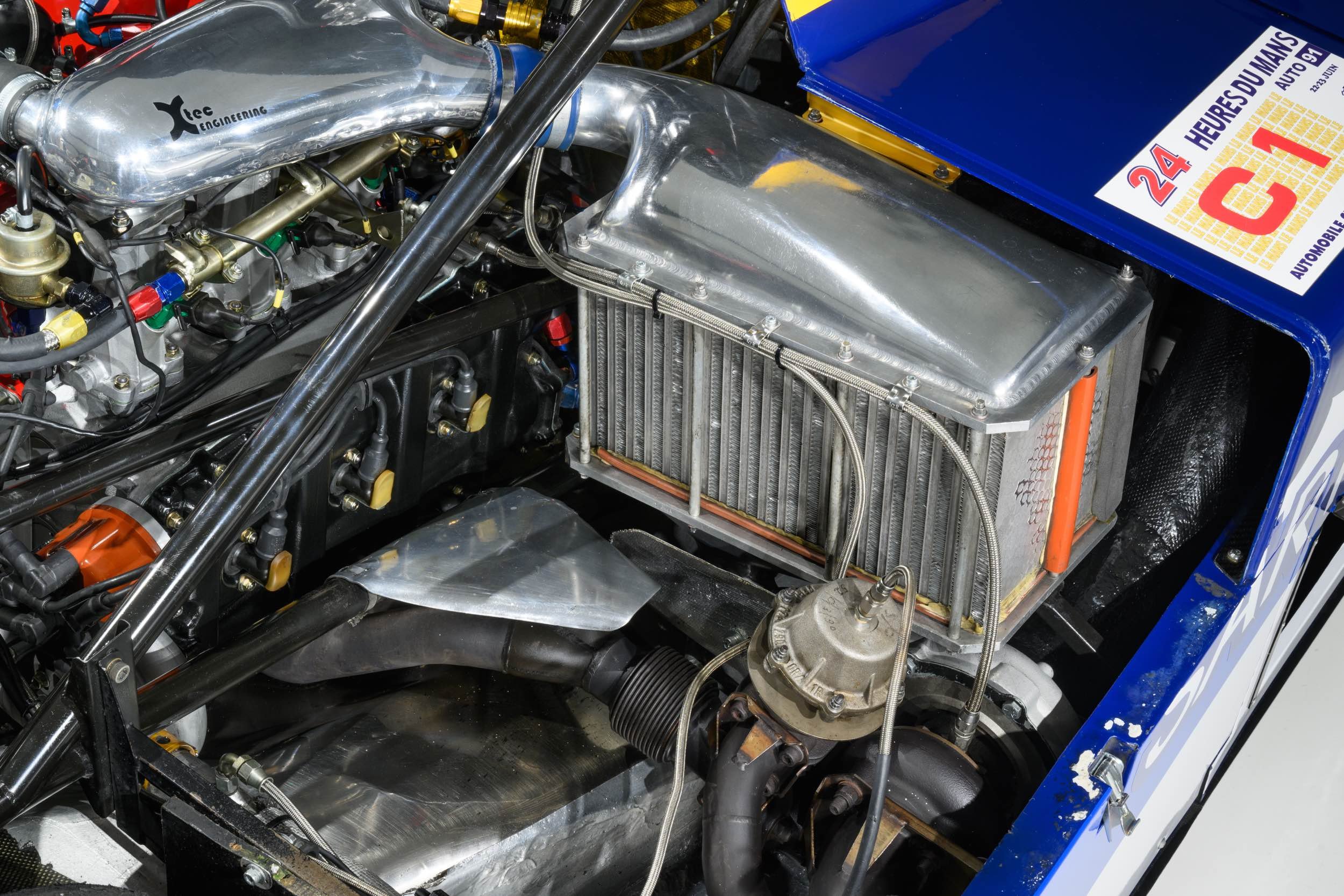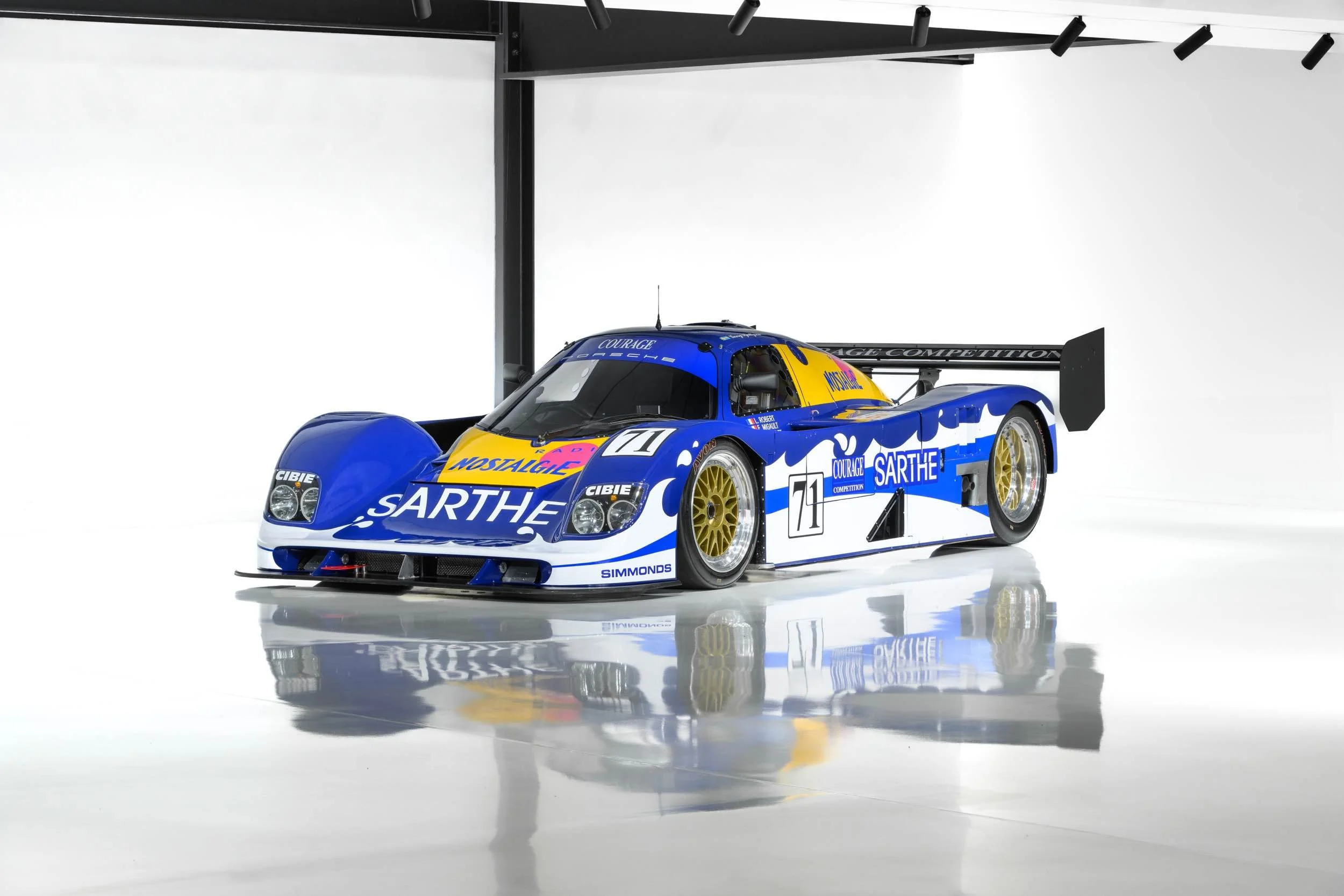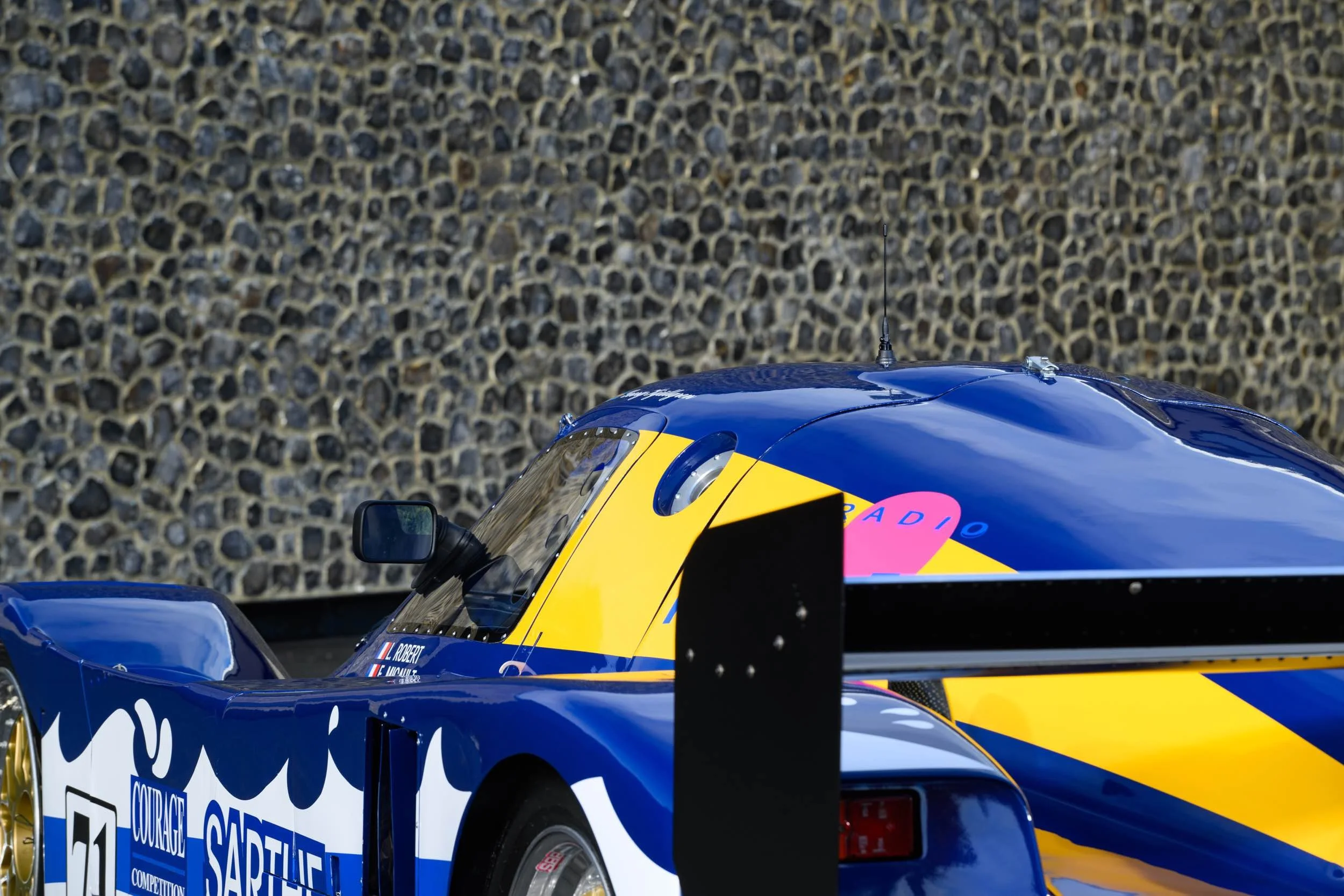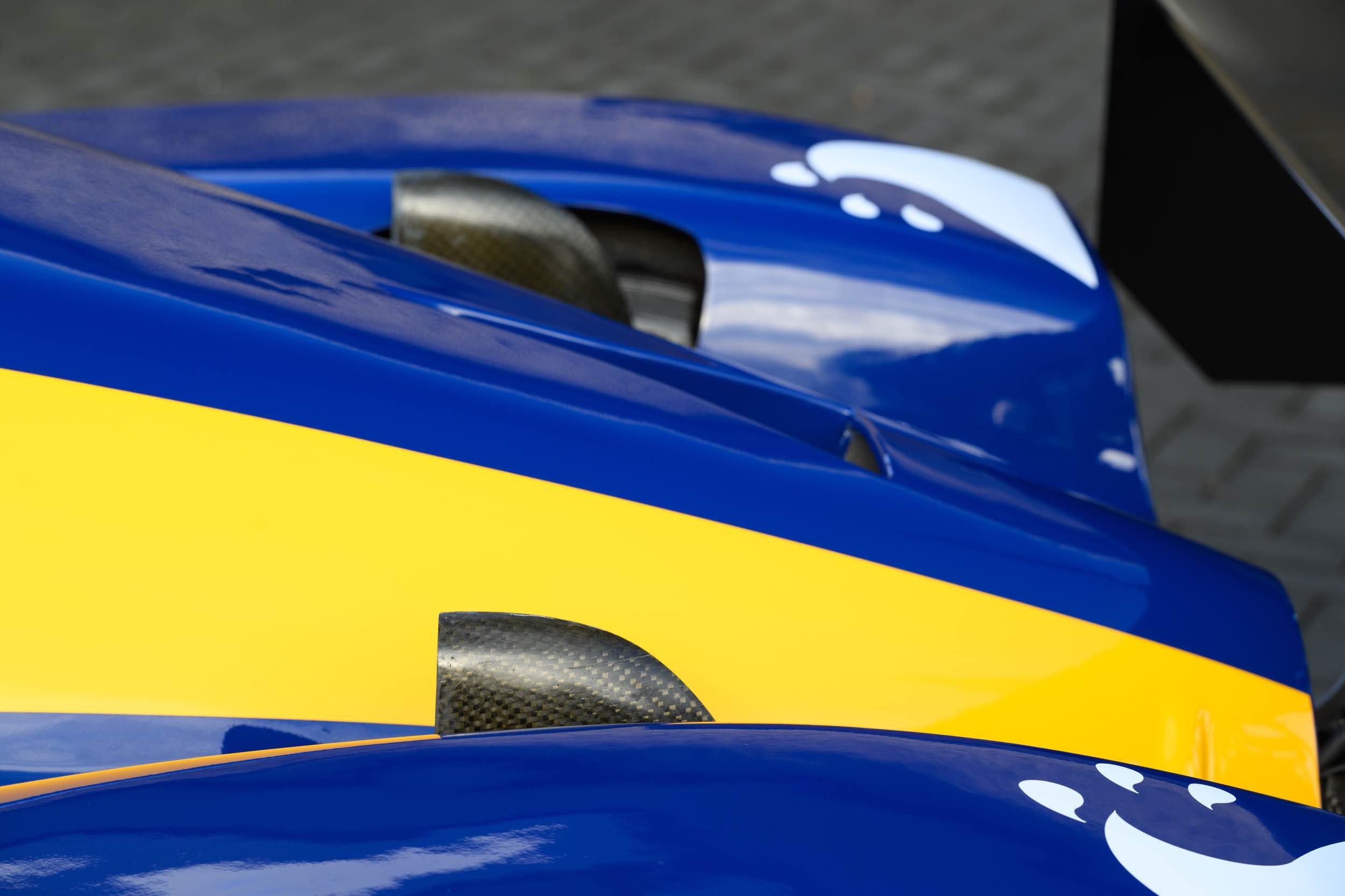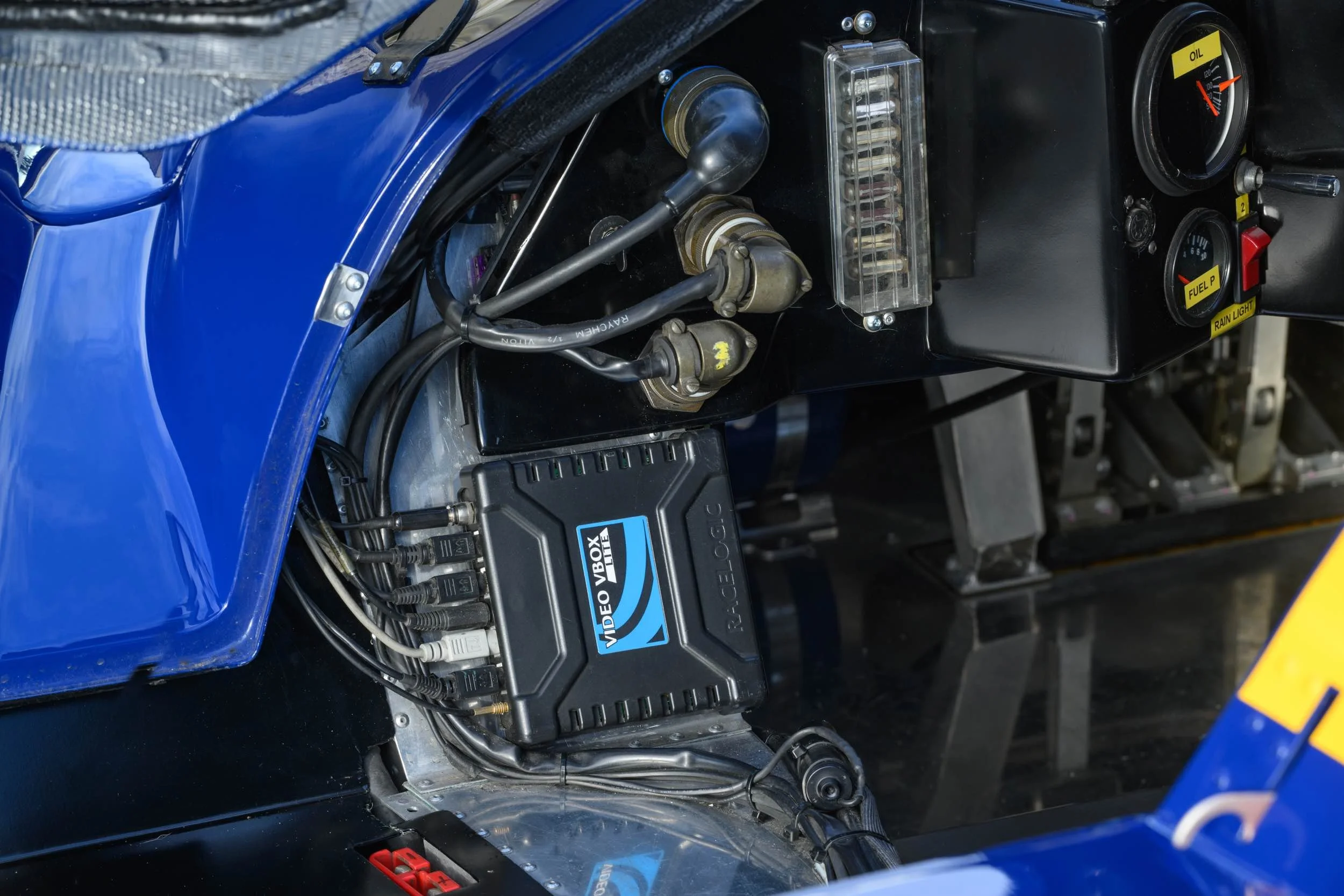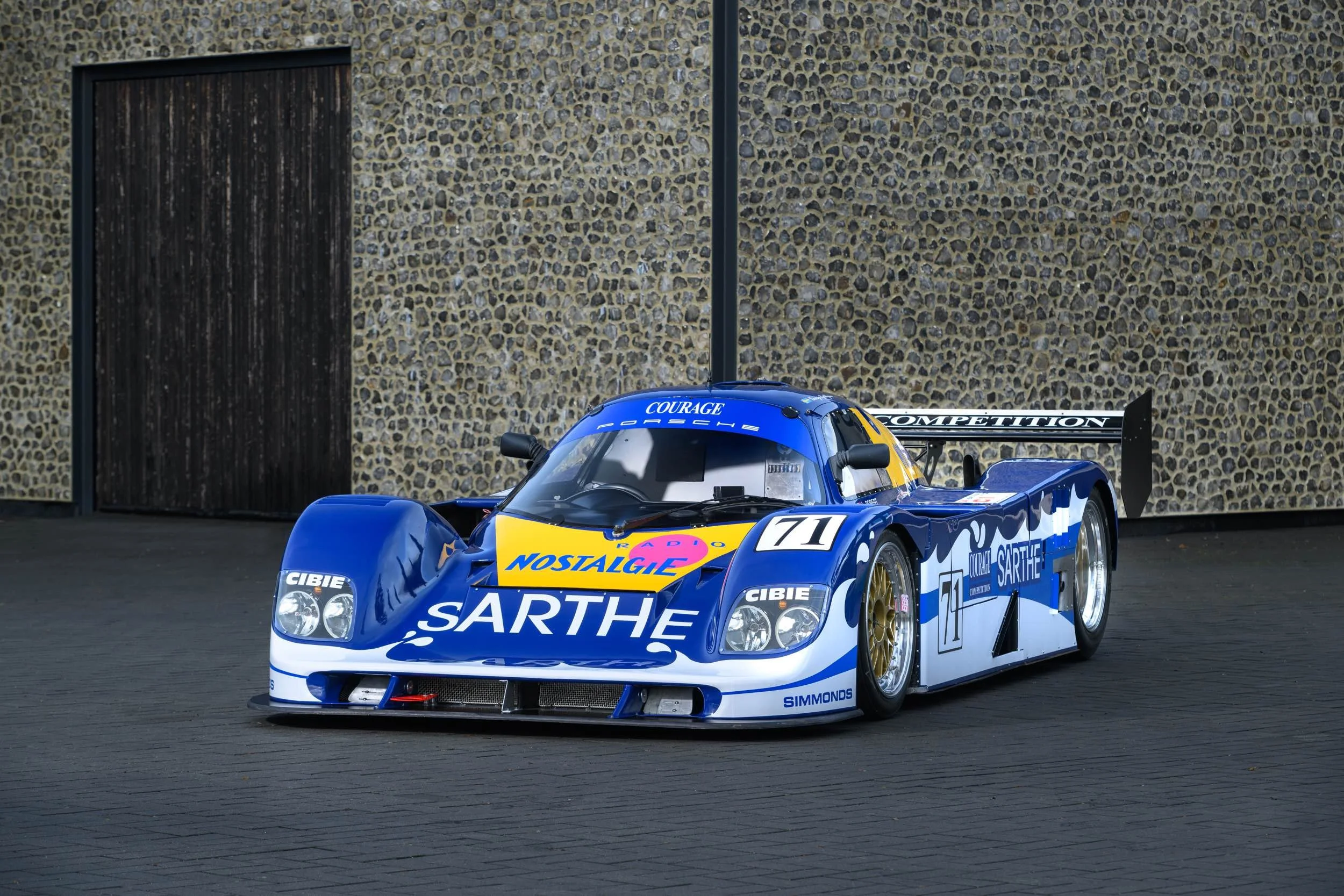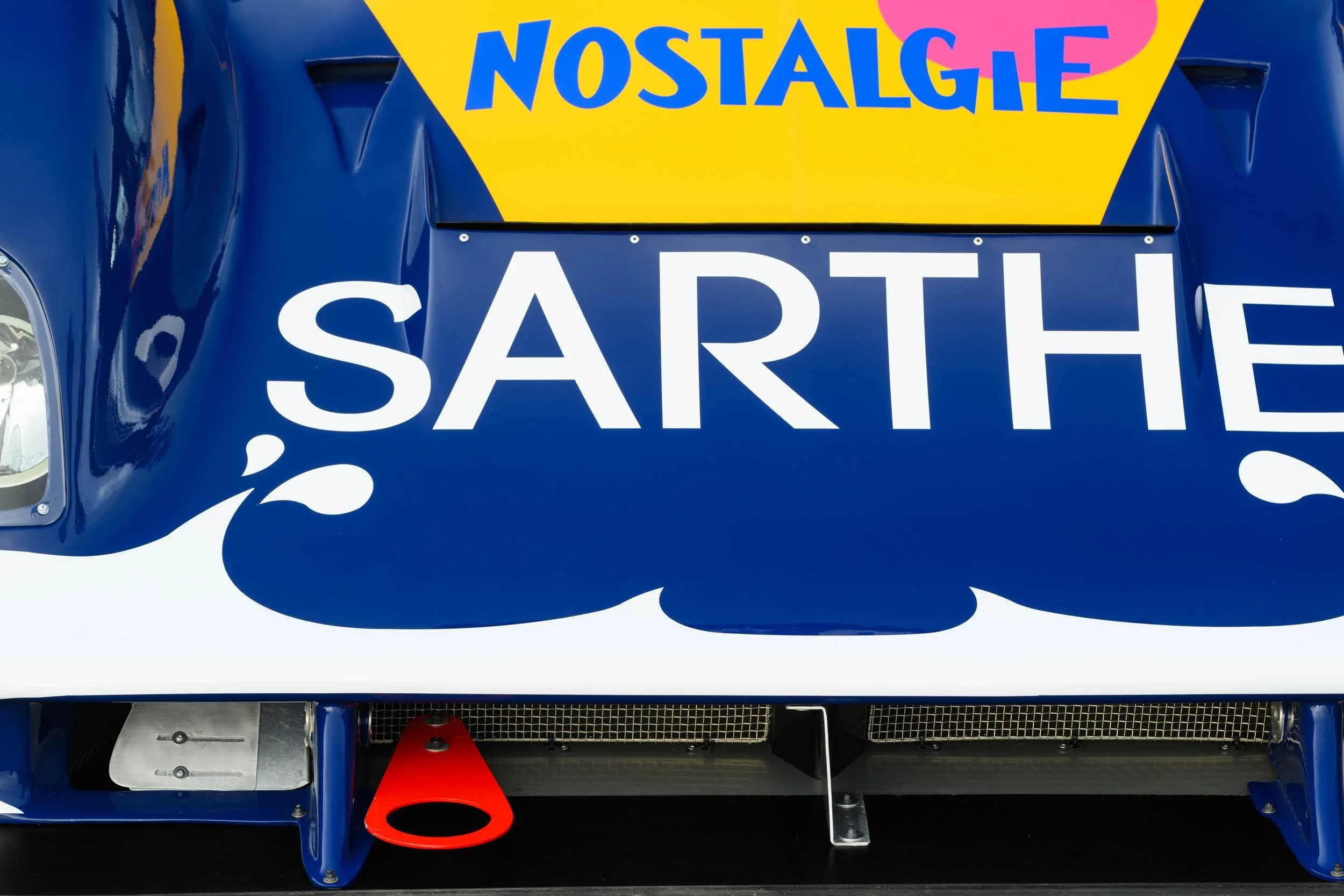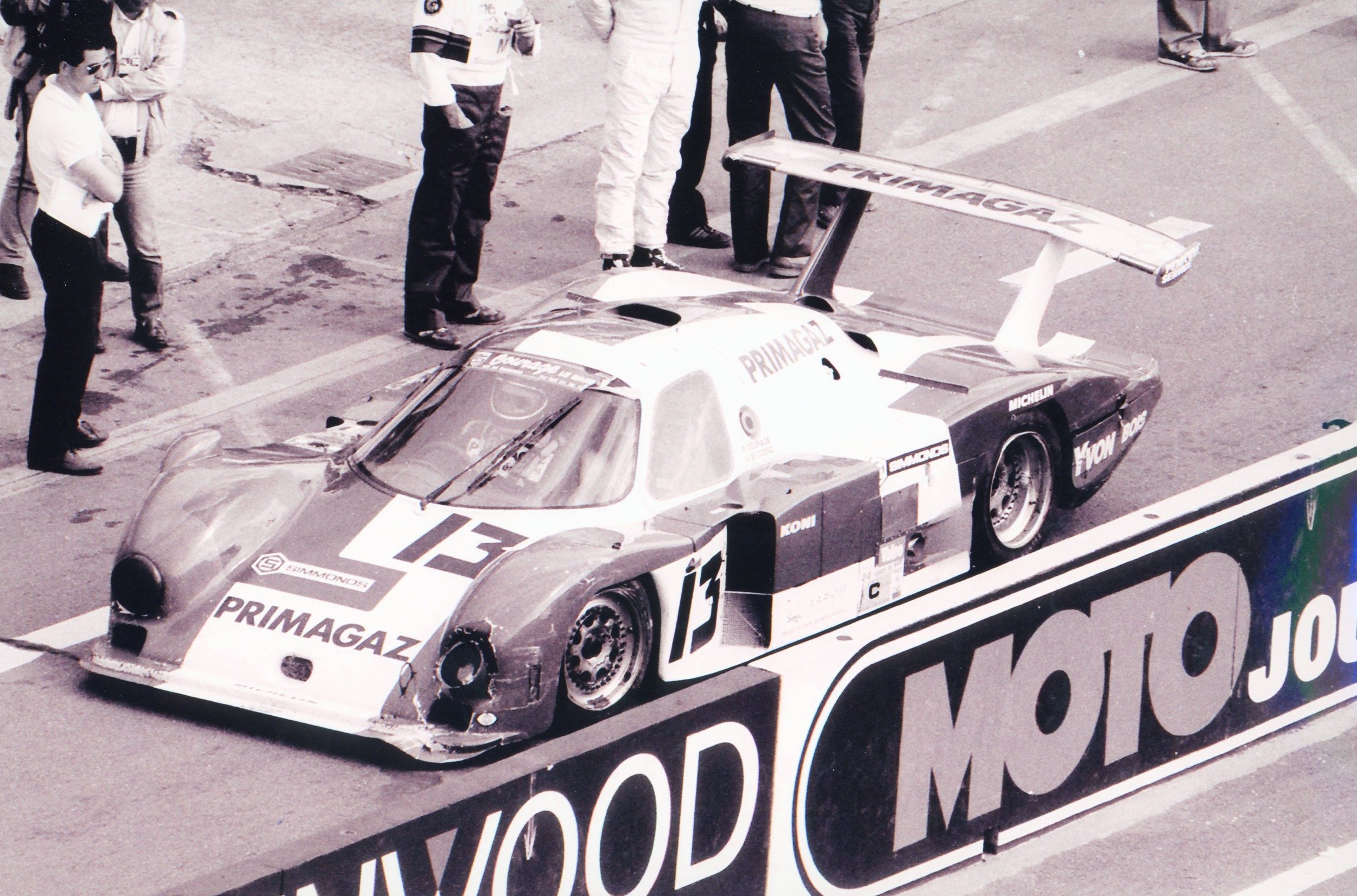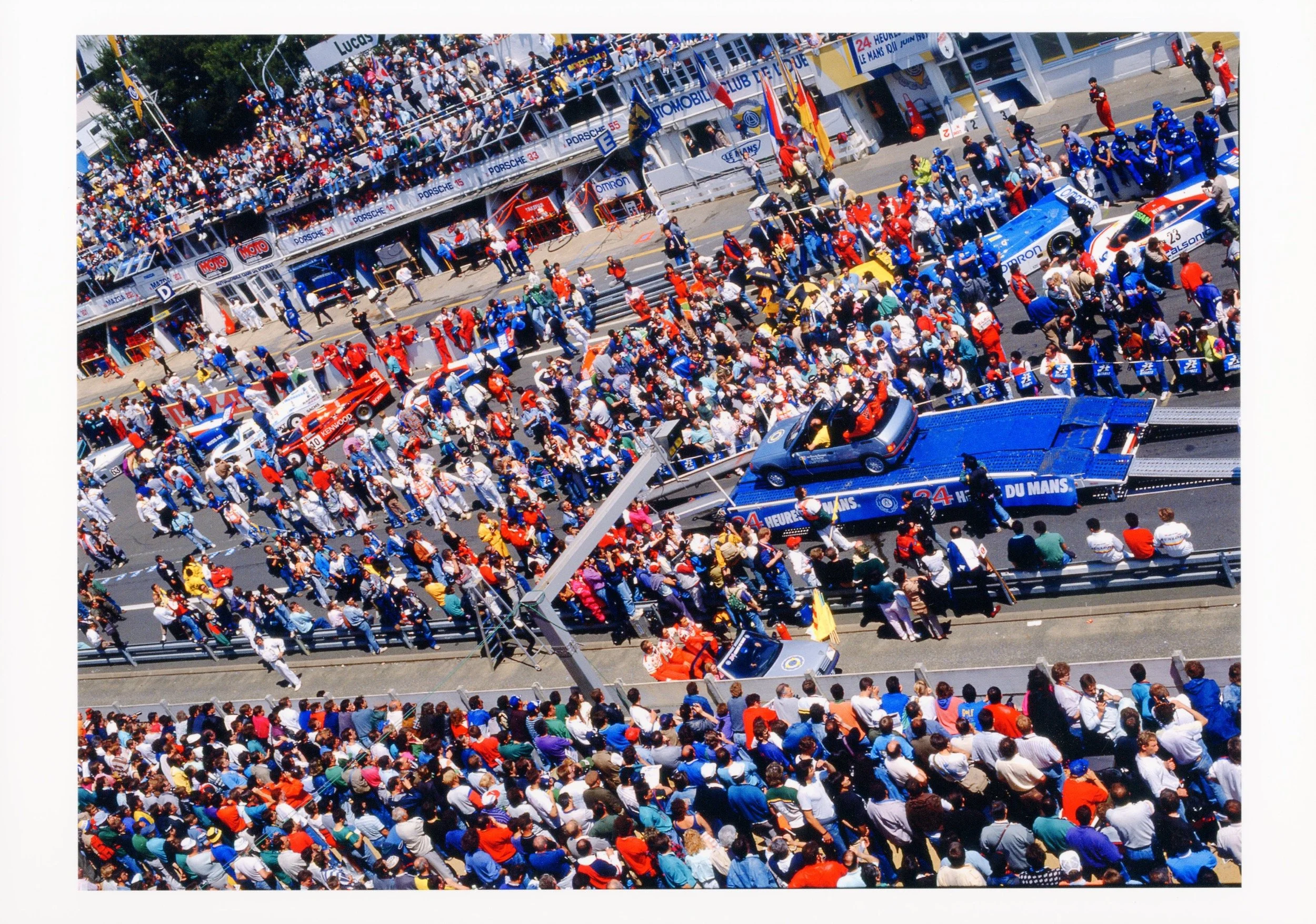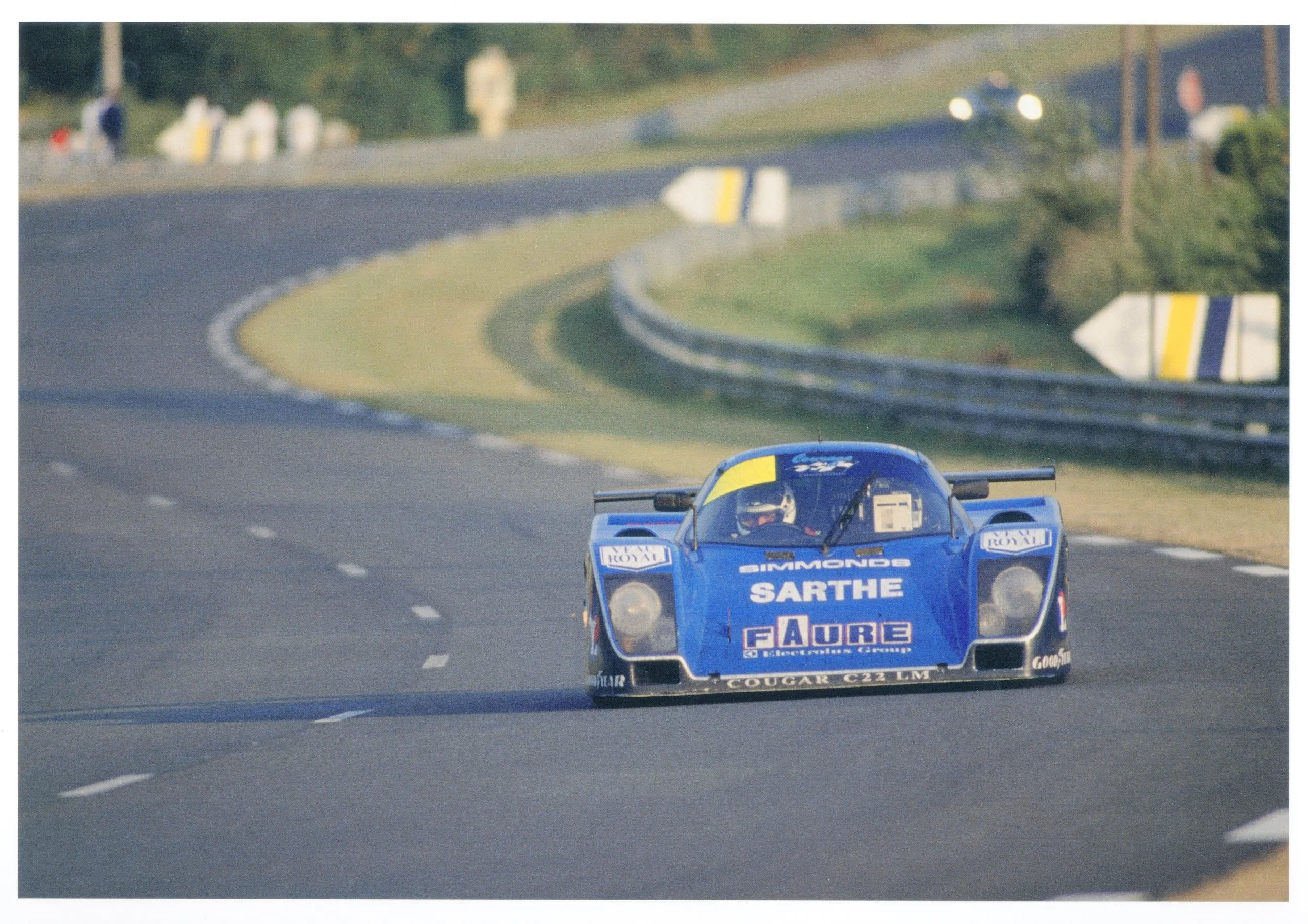1991 Courage Cougar C26S Porsche
£ 595,000
With an astonishing five participations in the 24 Hours of Le Mans, this bastion of the Group C era is one of the category’s most storied competitors and, thanks to its Porsche propulsion, remains a competitive proposition for historic racing.
OverviewTremendous history with five participations in the 24 Hours of Le Mans between 1984-1991
Driven by Le Mans legends Henri Pescarolo, Alain de Cadenet and local hero and constructor, Yves Courage
Offered in its ultimate 1991 C26S specification, featuring the same 3.0 litre, twin-turbo Porsche flat-six engine and gearbox as used by the iconic 962
Proudly displayed for several years in the official Le Mans Museum
An established competitor in historic Group C racing
Eligible for Peter Auto’s Historic Group C series (featuring races at Mugello, Paul Ricard, Estoril - and of course the bi-annual visit to Le Mans for racing on the full-length Circuit de La Sarthe during Le Mans Classic)
Also eligible for HSR events in North America, including the iconic Daytona and Sebring Classics
BackgroundA Le Mans native, driver and constructer, Yves Courage, established Courage Competition in 1981 to pursue his dream of winning the 24 Hours in a car of his own creation. Dubbed the Cougar C01, the first car was ready in time for the 1982 Nürburgring 1000km and spawned a generation of competition cars designed and produced locally to the famous Circuit De La Sarthe.
Built for the Group C regulations, the new Cougar was a conventional sports prototype in its first iteration, combining an aluminium monocoque chassis with a Ford-Cosworth DFL engine. Responsible for the aerodynamics was Michel Hubert, who had previously designed the Le Mans winning Renault-Alpine A442. Thanks to many late nights of work, the C01 was ready in time for the 1982 Nürburgring 1000 km race. The Primagaz liveried machine was driven by an all-French line-up that included Yves Courage himself. A suspension failure ended the charge of the privately built Group C racer early.
The all-important 24 Hours of Le Mans was up next. Sadly a gearbox issue put a spanner in the works. Courage continued to campaign the C01, which gradually evolved and for 1984, the C02 was introduced. Still powered by the DFL V8, the second Cougar was a development of the C01B it had replaced. The new C02 was raced at Le Mans and also competed in two IMSA races during the second half of the 1984 season.
The Ford Cosworth engine, and more specifically the destructive vibrations it created, proved to be the Cougar's weak spot. Being the Porsche distributor for the Le Mans area, Yves Courage turned to the German manufacturer instead. From the 1985 season onwards, he would be supplied with the well-proven twin-turbo flat-six engine that had already powered the Porsche 956 to three consecutive Le Mans wins. The 2.6-litre unit was mounted in the sole Cougar C02, which evolved to become the C12.
During the remainder of the decade, the Porsche-engined Cougars were raced primarily in the 24 Hours of Le Mans. During this period, the bodywork and aerodynamics package was continuously developed to create the C20, C22, C24, C26 and ultimately the C28 used in 1991. A highlight was a third overall in the 1987 edition of the 24 Hours of Le Mans. Now known as a Courage, the second generation design was finally introduced in 1993. Acquired many years later by Oreca, the Courage legacy lives on to this day with the hugely successful LMP2 sports prototypes.
Above: chassis C02-02 evolved enormously throughout its seven-year period competition career, which featured five Le Mans participations, with a best result of 20th overall.
This car - Chassis No. C02-02Although appearing on the entry list at Le Mans in 1983, chassis C02-02 did not in fact appear until the start of the 1984 season. Liveried in the striking red, white and blue Primagaz livery, the DFL-engined Cougar C02 was driven by Yves Courage himself, alongside Michel Dubois and John Jellinek during its maiden Le Mans entry. Having qualified a respectable 20th overall, oil-pump failure prematuraly curtailed the car’s efforts to finish the gruelling 24 hour enduro.
Leased then to Jellinek to compete in two rounds of the American IMSA Championship, the car was entered in the GTP category with backing from Budweiser. Having finished 39th in the Road America 500 Miles with Jellinek and Courage behind the wheel, the two were then joined by Alain De Cadenet for the Watkins Glen 500 km race. Starting 17th, they finished ninth overall.
Following Courage Competition's deal with Porsche, C02-02 was re-engined and updated to C12 specification for the 1985 season. Its first race in this guise was the 24 Hours of Le Mans where Courage and De Cadenet were joined by Jean-François Yvon. Starting 18th on the grid, the trio finished 20th overall. Later that year, Courage partnered with Le Mans legend Henri Pescarolo for the Spa 1000km. An entry for Brands Hatch was submitted but the car did not arrive.
With a brand new C12 due for 1986, C02-02 was surplus to requirements and sold to American racer Steve Johnson without an engine. It was fitted with a Ford V8 again and fielded in the IMSA Championship as the JRE-SR71. The car was raced in this configuration just twice. Johnson was classified 16th at the Road Atlanta 500 km and then placed 17th overall at the 150-lap Lime Rock Park race.
Courage Competition bought the car back and pressed it back into service in 1988 as a DFL-engined C12 for the 24 Hours of Le Mans. In this configuration, it was eligible for the Group C2 class and was fielded alongside a Porsche engined Cougar C20 and C22. Again sporting Primagaz colours, C02-02 was shared by Max Cohen-Olivar, Patrick de Radigues and Thierry Lecerf. The C12 lasted the longest of all three Cougars but ultimately was not classified, having covered only 273 laps.
Above: Porsche’s well-proven 962 engine and transaxle propelled C02-02 from 1989 onwards.
Ahead of the 1989 season, C02-02 was upgraded once more. A Porsche 962 engine and transaxle was fitted, along with revised bodywork which brought it up to the latest C22 LM specification. Painted blue, the car was backed by the local Sarthe region, the Faure Electrolux Group and Veau Royal. An electronics failure brought an early end to the race of Patrick Gonin, Bernard de Dryver and Bernard Santal. Chassis C02-02 then served as a spare car used in practice at two World Championship rounds later that year.
Not used during the 1990 season, chassis C02-02 was prepared for a sensational fifth Le Mans appreance in 1991. Before being entered for Chris Hodgetts, Andrew Hepworth and Thierry Lecerf, it received the latest upgrades. Now christened a C26S and with backing from pen company Bic, it lined up for qualifying. Having set a time of 4:14.499, it failed to appear for a weigh-in and was disqualified. The private Del Bello Racing team submitted C02-02 for another entry at Le Mans in 1992 but the car never arrived.
Following its lengthy racing career, C02-02 was retired from active duty in its 1991 C26S specification but painted in the colours of the sister car that finished 11th overall. It was displayed for several years at the Le Mans Museum from which it was eventually acquired in 2002 by American historic racer Mike Jankowski. He had it prepared for historic racing by Phil Stott Motorsport. In 2010, it joined the stable of Roger Wills, who also raced it in the Historic Group C Championship.
The vendor acquired the Cougar C26S from Wills and campaigned the car at Spa and in the Le Mans Classic in 2018 and 2019. It has been maintained to full running order by specialist Pete Chambers Automotive.
Sam Says“ Yves Courage is one of those extraordinary sporting characters who repeatedly risked everything for his dream and, for me, C02-02 is the embodiment of that relentless endeavour. Having driven for him in my youth, I know he’d be thrilled by the fact that the car remains active and competitive in historic racing today. An attractive livery, that iconic silhouette, extraordinary provenance and Porsche 962 propulsion… this car ticks a lot of boxes!”
GalleryPeriod ImagesEnquiriesInterested to learn more? Please don't hesitate to get in touch:


